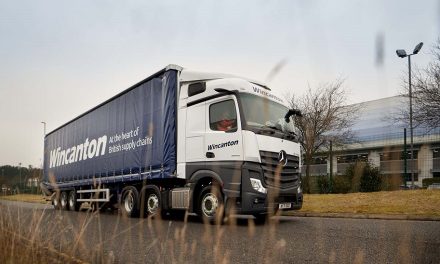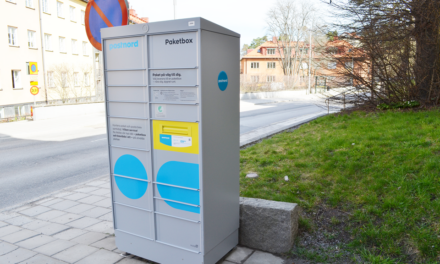
Postal efficiency in China is improving
James Thornton, CEO at Mailing Lists Asia, writes exclusively for Post&Parcel on the developments in China. Not so long ago many large volume mailers I knew in China would complain (with resignation) that up to 35% of their DM Materials were not being delivered – but they had no idea why – and what exactly to do about it.
Local mail at “in-city” rates was being delivered quite reliably but mail posted at “out-city” rates to other cities and provinces in China was being delivered only partially.
The cognescenti then worked out why this occurs. There are 23 provinces in China and the China Post administrations in each of these provinces were in competition with each other. If all “out-city” mail was dropped in one particular city that city would receive all the revenue but the administrations in those other provinces receiving that mail would have the full cost, time and effort of delivering that mail within their province without sharing in any of the revenue. This didn’t please those local postal officials, so not all the mail was being delivered. Understandable, I suppose, but not acceptable to the direct mail industry.
The cognescenti began to drop mail locally within individual provinces and to pay the postage locally, in this way generating higher response rates because mail was actually being delivered (more or less) in full.
Today, China Post makes this more difficult by requiring that any bulk mail dropped within a province must carry a return address in that province – and not in any other province.
However, a general view now amongst mailers is that China Post management have become more aware of the non-delivery problem and are gradually tightening up the system.
Non-delivery continues to be a problem in some of the remoter areas but the standard of service has become a lot more efficient and reliable in the major cities. Even “undelivereds” are now being returned to mailers. One habit amongst postal workers, which needs to be changed, is the tendency to leave mail addressed to occupants in larger buildings in one single pile on the ground floor (i.e. come and get it yourself!).
International mailers into China have the choice of saving money by printing, personalising, lettershopping and posting from within China – or mailing into China through the international postal system. Bulk mail posted into China after sortation to China Post specifications is cleared through Beijing, Shanghai and Guangzhu. The delivery time to Shanghai (for instance) can vary from four to nine days. Any airmail insignia on the outer envelope does seem to improve the certainty of delivery (if not the timing).
Most major postal administrations around the world offer mailers a discount structure based on volume. Not so in China – for some reason. It is possible to negotiate rebates, but numbers need to be large and your relationship with the local postal decision-maker needs to be good.
I once asked a postal consolidator in China if he could achieve a particular objective with China Post. He replied it would take “an awful lot of eating and drinking first” before he had any chance of being successful.
There’s not a lot of international volume mail being dispatched out of China itself – but there’s growing interest amongst international mailers in obtaining competitively priced (and efficient) printing, personalisation and lettershopping in China and then posting internationally from China with a China air-mail frank carried on the outer envelope.
Published postal rates from China Post are higher to most destinations than Hong Kong Post although airmail rates to Japan are about the same from both countries. Postal rates from Hong Kong, however, are expected to rise by the end of the year when Hong Kong will acquire interim IC status within the Universal Postal Union, which will require them to pay higher terminal dues to IC destination countries. Meanwhile, like any other country in the world rates are negotiable out of China – as long as you know exactly who you’re dealing with.
In a recent A/B split test between China and Hong Kong Post into the United States, a mailer of ours has received a lift of response of 16% in favour of China. This is certainly a major endorsement of China Post, which at least indicates all the mail must have been fully dropped and the China frank on the outer envelope must have proved a positive in getting the envelope opened by US recipients.
Fulfilment of mail order parcels and packages in China seems to work pretty well – in a market dominated by local courier companies. DHL, FedEx and UPS tend to receive higher end work only. EMS performs well although local couriers are cheaper – especially in heavier weights.
One pernicious habit which authorities should try and do something to control is that addresses on mail-order fulfilment packages dropped in the local courier system are too often copied (i.e. stolen) in an organised way and then brokered to other mailers in the market as “grey” mail-order responder lists. (Many local courier companies in India are also pretty experienced at allowing this to happen).
Overall, I’m glad to be able to report that the attitude and culture in China Post towards volume direct mail is changing for the better. As the internet and email replaces a lot of personal correspondence, top China Post management have come to understand that in China (as elsewhere) direct mail should be nurtured as a valuable source of business that can also generate (in consequence) significant fresh volumes of individual and parcel mail.
James Thornton has been mailing internationally for 34 years magazine, merchandise and other international DM projects on his own account and in joint ventures. He is also CEO of Mailing Lists (Asia) Ltd. (MLA) (with offices in Hong Kong, Manila and Mumbai) which specialises in brokering international lists and in providing DM printing, personalisation, lettershopping and international posting through partners in Hong Kong and China.
If you would like to contribute to Post&Parcel, write an article, or suggest a topic for us to explore, please email [email protected]













